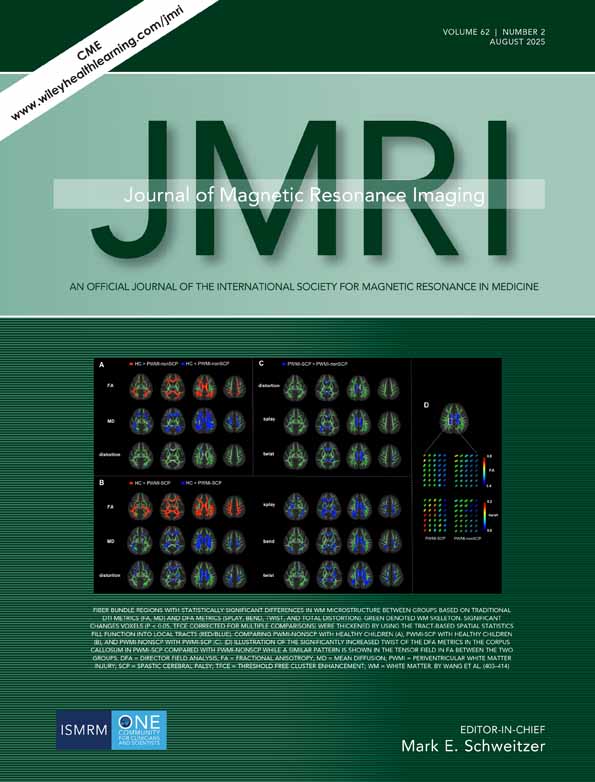MRI of pelvic masses: Efficacy of the rectal superparamagnetic contrast agent ferumoxsil
Abstract
The purpose of this study was to determine the potential value of rectally administered Ferumoxsil for pelvic MRI. Twenty patients with suspected rectosigmoid and ovarian tumors were prospectively examined before and after rectal administration of 300 to 600 ml of the superparamagnetic contrast agent Ferumoxsil. Imaging parameters (1.5-T system, phased-array coil, transverse T1-weighted spin echo (SE) and T2-weighted turbo-SE sequences, 6-mm slice thickness, 350-mm field of view [FOV], 512 × 512 matrix) were kept constant. Images were evaluated for tumor presence, lymphadenopathy, bowel involvement, and peritoneal implants. Precontrast and postcontrast studies were rated for bowel delineation, lesion/organ-to-bowel differentiation, presence of artifacts, and confidence of diagnosis. Delineation of rectum and sigmoid colon (P < .001) as well as separation of bowel and vagina, uterus/adnexa, dome of the urinary bladder, lymph nodes, and vessels improved significantly (P < .01) on both T1-weighted and T2-weighted postcontrast sequences. The rectal contrast agent did not increase the level of artifacts. Changes in diagnosis in 7 of 20 patients were mainly due to identification of colorectal tumors or bowel involvement on postcontrast images. The readers' diagnostic confidence was significantly higher on contrast-enhanced than on unenhanced studies (93 ± 6.4% vs 68 ± 25.2%). Rectal application of Ferumoxsil improves lesion/organ-to-bowel delineation and overall diagnostic confidence in pelvic MRI.




